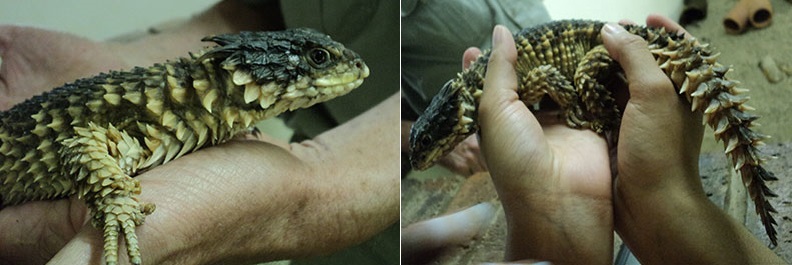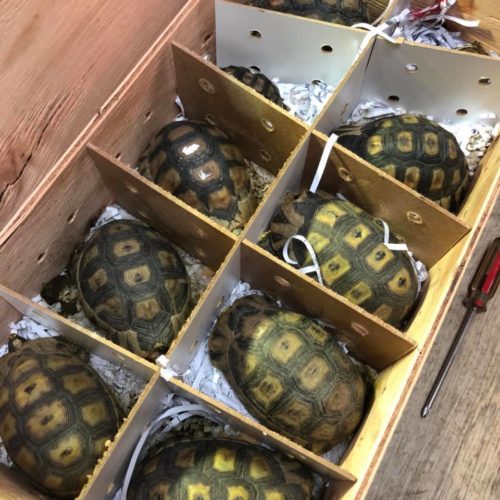
Reptile trade: Over the past few years, Ban Animal Trading and the EMS Foundation have been conducting extensive investigation and research into South Africa’s trade in live wild animals, publishing their results in The Extinction Business Investigative Report Series. The third instalment of this series deals with South Africa’s trade in reptiles and amphibians – exposing this growing industry as largely unregulated, unsustainable, and unethical.
As the report indicates at the outset, reptiles, amphibians, and arachnids are less charismatic than mammals or birds and, as a result, are perceived as having a far lower intrinsic value than the more iconic species. For the most part, public perception attaches negative stereotypes to creatures such as snakes, crocodiles, or frogs. Furthermore, ectotherms are considerably less expressive than mammals and birds, meaning that sick, injured, or stressed individuals suffer in silence. Their slow metabolic processes protract this suffering even further. Globally, reptiles are amongst the most inhumanely treated animals in the pet trade, with a mortality rate of some 70% at wholesalers being considered an acceptable industry standard.
The previous two reports in the series (see here and here) examine in-depth how loopholes, corruption, and ineffective control systems in trade permits, including those of CITES, facilitate the laundering and smuggling of wildlife. These systemic failures have allowed the illegal trade to masquerade as legitimate and have been highlighted repeatedly by several different organizations and individual activists. Where reptiles, amphibians, and arachnids are concerned, this is often exacerbated by inadequate or non-existent population estimates or, in some cases, a failure to list entirely.
When compared to mammals or birds, catching these animals in the wild is relatively cheap and easy, spurred on by an ever-growing demand from collectors, hobbyists, and traders. According to the report, at least 50% of the reptiles and amphibians that move through international trade are wild-caught or poached. The remaining 50% are reported to be captive-bred, but little effort is made to investigate the validity of their origins and shipments, especially those containing venomous species, are seldom inspected.
South African authorities issued the following export permits (both national and CITES) from 2013 to 2020:
- 2,179 indigenous tortoises – most of which were exported as part of the pet trade
- 12 Nile crocodiles – the majority were imported by zoos
- 262 indigenous snakes – most of which were exported into the pet trade
- 21 indigenous Armadillo girdled lizards
- 96 indigenous rock monitors
- 1,456 indigenous amphibians
While international trade is, in theory, governed by CITES regulations, this needs to be implemented, complemented, and bolstered by national law. In South Africa, the National Environmental Management: Biodiversity Act (NEMBA) was enacted in 2004 to regulate CITES-listed species. Under this act, the Threatened and Protected Species (ToPS) regulations govern any activities that could impact the survival of listed species. Any pursuit involving these species (such as capture, breeding or trading in wild specimens) should only be permitted after the South African Scientific Authority has issued a non-detrimental finding (NDF) as per the CITES treaty. For many of the species discussed in the report, such as tortoises, the necessary NDF is non-existent.
According to the report, when wild tortoises are confiscated by the provincial authorities or surrendered by a member of the public to the Johannesburg Zoo or the National Zoological Gardens in Pretoria, they are ‘reclassified’ as captive-bred, regardless of origin. Instead of being rehabilitated and released back into the wild, these are then sold on to wildlife traders and exported with minimal restrictions due to their new captive-bred status.
From the trade in snakes and lizards to frogs and arachnids, Ban Animal Trading and the EMS Foundation highlight several recurring failures. In many instances, the animal species concerned is not listed by CITES, meaning their origin (wild or captive-bred) and purpose for export is irrelevant. Where the animal species is listed, the exporters must declare them as either wild-sourced or captive-bred but do so in the knowledge that this is difficult to confirm and unlikely to be questioned. The report indicates that export permits were issued for “captive-bred” individuals of species not known to breed in captivity, such as Giant girdled lizards or rain frogs.
The report examines South Africa’s trade in endotherms in detail (both in terms of species as well as export destinations of these animals). It exposes just how damaging this trade is to the country’s indigenous wildlife. It highlights the failures of the Department of Forestry and Fisheries to implement existing legislation to ensure the regulation and management of biodiversity. Most importantly, the report stresses that this existing legislation is inadequate and failing the animals it purports to protect.
It concludes, somewhat poignantly, “Reptiles do not fit into our view of the world and its inhabitants, and because they instil a primordial fear in most humans, are not afforded the same protection as other animals. We pay little attention to the value these creatures that have lived on the earth for millions of years bring to biodiversity and their unique role in the ecosystem.”
The above is a summary of the extensive report which should be read in full and can be accessed here: “Plundered: South Africa’s Cold-Blooded International Reptile Trade”

To comment on this story: Login (or sign up) to our app here - it's a troll-free safe place 🙂.![]()










